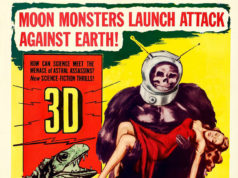Now that the country has reacted with disgust and amusement to the extremist 2014 Texas Republican Party platform, the next logical question is: Where did that platform’s piquant combo of modern alienation, paranoia about the federal government, and antagonism against women, gays, and immigrants originate?
Obviously, hard-right politics in Texas started long before the national emergence of the Tea Party in 2009 and even earlier than the 1980 rise of the evangelical right in the Republican Party under Ronald Reagan. The Texas Right: The Radical Roots of Lone Star Conservatism, a sharply written new collection of essays on post-Civil War Texas history from Texas A&M University Press, entertainingly illustrates how a wacky strain of hardcore right-wingers has flourished (if not always succeeded) alongside mainstream Texas conservatives for a good 150 years now.
George Clark, a Democratic primary contestant for the 1892 gubernatorial nomination, ran aggressively on a “Turn Texas Loose!” campaign that rejected all federal taxes and regulations on Lone Star industries and championed the always vague concept of “personal liberty.” Sound familiar? Clark lost the nomination, but over the course of the 20th century, his radical-right descendants — and a lot of other conservatives — jumped ship from the Democrats to the Republican Party and gained control over the convention and primary processes there.
The scholars and journalists who’ve contributed pieces to The Texas Right, edited by Collin College history professors David O’Donald Cullen and Kyle G. Wilkison, cover some of the familiar rogue’s gallery of Texas reactionary groups –– the Jeffersonian Democrats of 1936 and Texas Regular movement of 1944 (both of which despised and worked against FDR’s New Deal federal activism); the Shivercrats of the 1950s (Democratic supporters of Texas Gov. Allan Shivers, a man famously too right-wing for even U.S. Sen. Joseph McCarthy); and the state chapters of the John Birch Society that flourished especially in North Texas until the 1970s.
In the opening essay, Cullen carefully distinguishes what the book calls “the radical right” from garden-variety conservatives. Texas’ most reactionary groups and leaders, Cullen insists, have always combined “a conspiratorial worldview” with “a suspicion of the democratic process, an emphasis on personal liberty over equality, and on economic individualism over community interests.”
The radical right in Texas also has tended to eschew public debate and discourse, preferring a tactic the book’s contributors call “eliminationalism” –– the systematic “suppression, removal, or extermination” of the political opposition. (Shuttering most of the state’s abortion providers by legislative fiat, anyone?)
All nine essays are persuasive and informative, and, though The Texas Right was published by an academic press, the pieces were written with a general audience in mind: They make you want to learn more about the highlighted individuals and groups. Michael Phillips’ opener, “The Racialization of the Lone Star State,” explores how far-right businessmen and politicians handled both immigrant communities and the state’s African-American population once Reconstruction commenced. Some radical-right leaders worried that newly freed slaves and poor uneducated whites would form a political coalition based on shared economic interests. In an effort to quash that, influential Texas U.S. Rep. John H. Reagan lobbied Gov. J.W. Throckmorton in 1866 to include “racially inferior whites” along with blacks as targets of IQ tests and poll taxes.
In fact, there was a biracial socialist movement called the Populist Party in the 1890s, though it didn’t get very far. As editor/contributor Wilkison shows in his piece “The Evils of Socialism,” reactionary Baptist preacher J.R. Burnett waged a 1900 public war for the souls of poor white and black sharecroppers who’d fallen under the spell of Christian socialist preacher Morgan A. Smith. (There really was such a thing as Christian socialism back then.) In his widely read 1914 book The Devil and Socialism, W.F. Lemmons, another radical- right minister of that era, definitively linked Marxism, Darwinian evolution, and all preferences for “scientific materialism” over a Christian God as interrelated evils. Contemporary evidence of climate change would presumably not fare much better in Lemmons’ eyes.
And the flamboyant hatemongers just keep on coming in The Texas Right. Keith Volanto’s “The Far Right in Texas Politics during the Roosevelt Era” chronicles how Texas oil baron John Henry Kirby co-founded a 1934 precursor to the Tea Party, the Southern Committee to Uphold the Constitution (SCUC), to combat Roosevelt’s anti-poverty, pro-labor programs. SCUC eventually fizzled, in part because the group’s Southern members discovered that “Northern elites” like the DuPont and Sloan families were helping prop it up. (Apparently, the only thing worse than an FDR socialist was a Yankee of any political persuasion.) Nancy E. Baker’s “Focus on the Family” spotlights Pauline Wells, the wife of a wealthy Brownsville rancher who campaigned passionately against women’s suffrage, warning the Texas Legislature in 1915 that giving “hysterical” women the vote would also lead to “Negro rule” in parts of the state where black women outnumbered white women. George N. Green’s “Establishing the Texas Far Right” recounts how, in 1944, University of Texas president Homer Rainey was fired after a coalition of hard-right Texas businessmen and legislators went on a well-funded tear to purge state universities of liberal elements. Rainey was accused, among other things, of harboring “a nest of homosexuals” in the faculty. (On the bright side, no one suggested the alleged nest-dwellers seek reparative therapy for their sexuality.)
In light of the aggressively reactionary 2014 Texas Republican Party platform, The Texas Right feels like required reading, if only to get a better handle on how far the roots of hard-right ugliness reach down into the history of the Lone Star State. As always with the radical right, the motto seems to be: so many groups to hate, so little time.













That is very interesting indeed. I am going to have to read it. Good info! Thanks!
The “right to fall into govt dependant quicksand” states are bordering us. So I choose Texas where, at least, a moderately decent hard working person can get ahead —on his/her own merits. Go peddle your socialist BS in Romania. Oh! I forgot( my bad) they put to death their useless “leadership for life”.
skeptic: you give ignorant folks a worse name. read the book or don’t. . . but spare us your teatard, reactionary imbecility.
Ah, there he is, that’s why I live here in Texas. I love the smell of stupidity in the morning.
Peckerwoods are going to be peckerwoods, hammer-heads will be hammer-heads, Baggers will be Baggers. Truly, they are more common than fire-ants. The basis, the founding reason for existence of the Southern Baptist Convention was to exclude people of Negroid blood. The Southern Baptist maintained Negros to be classed biolodgicaly with chickens, or milk cows, or some other hateful bunk. By the way, Texas censors our childrens Textbooks. See anything new here concerning those heros? Do you suppose any of those deep thinkers were involved in shutting this sweet country down where it couldn’t pay it’s old folk’s pensions? Wasn’t one of the leaders of that stinking fiasco a hammer-head, Holly-Roller, Cuban-Canadian, fool? Let’s all sing ” Bringing in the Sheves” and then let’s pray for the black-hearted half-wits. Beauty is as beauty does…Peckerwoods aren’t pretty. They’re ugly as sin it’s own self.